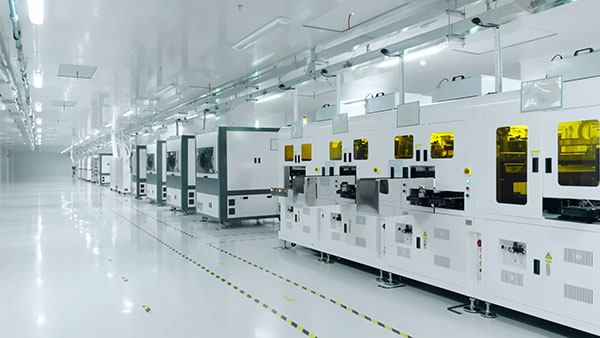Future manufacturing requires enhanced sensing for productivity of facilities and safety of robotic coordination with humans.
The rise of Industry 4.0 promises to unlock tremendous value for manufacturers, underscoring the vast potential of what may be a new industrial revolution. The stakes for implementation are high, as leaders across the industry consider the benefits: Digital transformations in manufacturing can boost labor productivity by 15% to 30%, reduce machine downtime by 30% to 50%, and increase throughput by 10 to 30%, according to McKinsey analysis.
This profound digital transformation is driven by the integration of advanced robotics with other emerging technologies, such as cloud computing, the Internet of Things, and AI. But while all of these intersecting technologies play a vital role in creating truly connected and intelligent factories, the road to Industry 4.0 depends on lidar.
As a total sensing solution for manufacturing environments, lidar’s precise and accurate measurements make it an ideal technology for advancing warehouse automation and integration with a myriad of technologies on the horizon. Lidar is an excellent option for monitoring every element and process in detail through the enormous amount of spatial data it can generate quickly with polling rates up to one million pulses per second.
Breakthrough innovations in lidar systems, including miniaturizations, mass manufacturing capabilities, and cost reduction, have set the stage for widespread implementation across the manufacturing industry. By equipping warehouses and the equipment that operates within them with lidar, we are seeing advancements in safety, efficiency and production capabilities.

Manufacturing and warehouses are increasingly integrating specialized machinery and advanced robotics into their day-to-day operations, which requires additional monitoring, inspection, and training. This is where digital twins, produced by lidar, come in. 3D digital twins deliver precise virtual models of an object or a space, even in dark or hard-to-reach areas.
By leveraging a digital twin with AR/VR technology, engineers and warehouse employees can train for critical positions by giving them ample, valuable practice before their next level of training on expensive equipment or during operations. This safe, realistic environment provided by lidar-based digital twin technology prepares employees for the moment they step into a live facility. This can save manufacturers time and money and support safety efforts, as manufacturers can avoid lengthy production shutdowns due to training challenges and ensure their engineers know exactly how to handle equipment.
Similarly to training, lidar plays a beneficial role in preventative maintenance and quality control. Manufacturers use lidar to monitor equipment and processes, so they can detect anomalies during operations and minimize stoppages of machinery for necessary repairs: Companies like Unitree have developed robots with lidar modules, as well as optical and depth-sensing cameras, specifically for automation and inspection in industrial environments.
Lidar is the backbone of autonomous navigation, especially in the growing number of manufacturing facilities where autonomous mobile robots (AMRs) function alongside humans. To be fully aware of surrounding processes, AMRs need to “see” the location of every other networked device and monitor the local environment in real time for object detection and risk prevention. By leveraging lidar with simultaneous localization and mapping (SLAM), AMRs can accomplish these goals instantly and continuously.
While automation in manufacturing is far from a new trend, advances in lidar technology have expanded the capabilities of industrial mobile robotics. Plug-and-play mapping means that picker robots, automated forklifts, and automated guided vehicles (AGVs) can function efficiently in indoor and outdoor environments. The TugBot developed by BOWE, for example, can tow up to 1,300 pounds and automate logistics processes without requiring facility modifications. The same lidar technology powers collision avoidance and automatic emergency braking functions, which ensures that manufacturing facilities remain safe for humans.

The manufacturing industry has only begun to scratch the surface of Industry 4.0. As lidar, advanced robotics, and AI technology begin to converge, facilities will evolve to become intelligent hyper-connected structures that scale quickly for faster manufacturing cycles. It’s not a question of if lidar implementation makes sense across manufacturing; it’s a question of when.
While challenges still exist at this stage of the growth curve, mass manufacturing innovations from companies like RoboSense have significantly lowered the total cost of ownership for implementing lidar solutions. The most advanced autonomous robots now depend on lidar to allow them to perform the dirty, dull, dangerous tasks that distract people from more complex and significant work—proof that getting lidar right today is how manufacturers will lead the way to Industry 4.0 tomorrow.
Peipei Zhao is the President of North America for RoboSense where he leads the advancement of transportation safety, sustainability, equity, and accessibility through state-of-the art lidar technology.
In this episode, I sat down with Beejan Giga, Director | Partner and Caleb Emerson, Senior Results Manager at Carpedia International. We discussed the insights behind their recent Industry Today article, “Thinking Three Moves Ahead” and together we explored how manufacturers can plan more strategically, align with their suppliers, and build the operational discipline needed to support intentional, sustainable growth. It was a conversation packed with practical perspectives on navigating a fast-changing industry landscape.